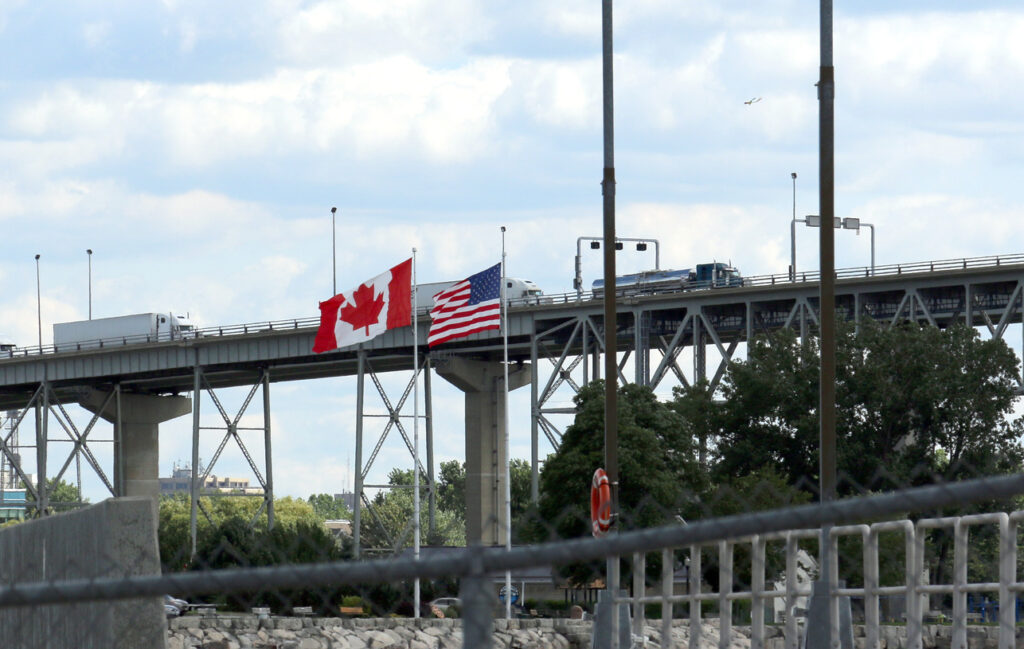A complete guide to shipping to the USA from Canada with customs requirements, documentation needs, and cost factors for cross-border freight.

Cross-border shipping between Canada and the USA requires specific documentation, customs compliance, and strategic planning. This guide outlines the key requirements for successful freight movement across the border.
Required Documentation
Your cross-border shipment must include specific documents to clear customs and meet federal regulations. Each document serves a distinct purpose in the shipping process:
- Commercial invoice – Details the goods’ value, quantity, and description
- Bill of lading (BOL) – Works as a contract between shipper and carrier
- Customs clearance forms – Declares goods for border processing
- USMCA certificates of origin – Proves goods qualify for duty-free status
- Safety certificates – Required for regulated goods like food or chemicals
- Electronic Export Information (EEI) – Mandatory for shipments over $2,500
Customs Requirements
U.S. Customs and Border Protection needs specific information to process your shipment. Prepare these essential details:
- Harmonized System (HS) codes – International classification numbers for goods
- Product value declarations – Accurate cost of goods for duty assessment
- Country of origin – Where products were manufactured or produced
- Detailed product descriptions – Clear explanation of shipped items
- Shipper and consignee information – Complete contact details
- Export permits – Required for controlled or regulated goods
USMCA Benefits
The United States-Mexico-Canada Agreement replaced NAFTA in 2020. This trade agreement offers several advantages:
- Duty-free status for goods that meet North American content requirements
- Simplified customs procedures with reduced paperwork
- Lower compliance costs through standardized regulations
- Faster border clearance with dedicated processing lanes
- Enhanced protection for intellectual property rights
- Support for small business trade growth
Restricted and Prohibited Items
Certain items require special permits or face shipping restrictions. Plan ahead for:
- Food products – FDA registration and prior notice required
- Plant materials – Phytosanitary certificates needed
- Animal products – USDA permits and inspections mandatory
- Chemicals – Safety data sheets and hazmat documentation
- Pharmaceuticals – FDA import licenses required
- Dangerous goods – Special packaging and handling protocols
Cost Factors
Your shipping costs depend on multiple variables:
- Distance to destination – Longer routes increase fuel costs
- Freight weight – Heavier loads mean higher rates
- Cargo dimensions – Space utilization affects pricing
- Service level – Faster delivery increases cost
- Fuel surcharges – Fluctuate with market prices
- Customs duties – Based on product classification
- Insurance – Protects against loss or damage
Transit Times
Standard delivery windows vary by location and service:
- Major cities: 2-3 days – High-volume routes with direct service
- Regional areas: 3-5 days – Additional time for local delivery
- Remote locations: 5-7 days – Limited carrier availability
- Express options – Available for time-sensitive freight
- Weather considerations – Seasonal delays are possible
- Border crossing times – Vary by port and volume
Compliance Tips
Follow these practices to avoid delays and penalties:
- Submit accurate documentation – Prevents customs holds
- Declare all items – Avoid fines for undisclosed goods
- Include correct values – Duties assessed on accurate costs
- Use proper packaging – Prevents damage and delays
- Label packages clearly – Speeds handling and sorting
- Follow safety regulations – Meets transport requirements
Shipping Methods
Select the best option for your freight needs:
- Full truckload (FTL) – Dedicated truck for large shipments
- Less than truckload (LTL) – Shared space for smaller loads
- Intermodal – Combines truck and rail transport
- Expedited service – Priority handling for urgent freight
- Temperature controlled – For sensitive goods
- Specialized equipment – For oversized or unique cargo
ShipNorthAmerica’s network provides complete cross-border shipping solutions with dedicated customs expertise. Contact our team to plan your freight movement from Canada to the USA.
